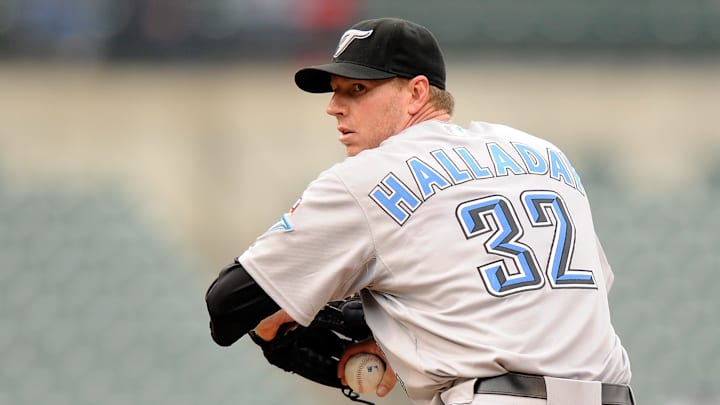When you mention the late, great Roy Halladay, we're talking about one of the very best players in Blue Jays franchise history. In fact, it's between him and Dave Steib for the title of the team's best ever pitcher.
However, if you go back to Halladay's early years in Toronto, he actually holds a surprising distinction. As per B/R Walk-Off, he has the worst ever individual season by a Blue Jays player since 2000, with a -2.8 WAR.
In fact, the eight-time All-Star's -2.8 WAR is the third-worst overall of all 30 players named, with B/R Walk-Off selecting someone from every Major League team. This only adds to the surprise, with him arguably being the most noteworthy name on the list.
Halladay's initial exposure to the Majors had shown plenty of promise, with him coming within one out of a no-hitter in just his second ever start, at the end of the 1998 season. The following year saw his first sustained action in the big leagues, as he went 8-7 in 18 starts and 36 overall appearances.
Things start to go wrong
There was certainly some encouragement for the 1995 17th overall draft pick as he produced a 3.92 ERA, but he also struggled at times, as highlighted by a 5.36 FIP and 1.574 WHIP. However, this was nothing compared to the nightmare he endured during the 2000 season.
Halladay just couldn't get on track as everything went wrong, with him recording a horrendous stat line which included a 10.65 ERA, 6.47 FIP and 2.202 WHIP, which were all career-worsts. As per ESPN's Sam Miller, it represented the poorest ever season in Major League history by a pitcher who threw at least 50 innings.
The righty would begin the 2001 campaign in Single-A working on his confidence and game with pitching coach Mel Queen, who actually consulted a sports psychologist beforehand. Then, as per The Athletic's John Lott, Queen realised the young pitcher was relying almost exclusively on his arm strength, and they began working together on improving his pitching technique and repertoire among other things.
Thanks to the hard-nosed Queen's assistance and guidance, Halladay started working his way back up through the minors, with him eventually returning to the Majors later on that year. The changes were immediately evident, as he went 5-3 in 16 starts (plus another appearance out of the bullpen), recording a 3.16 ERA, 2.34 FIP and 1.158 WHIP.
Setting a course for the Hall of Fame
The improvements really started to come to the fore in 2022, as Halladay earned his first ever All-Star selection. The following year he would win his first of two Cy Young Awards and the rest, as they say, was history.
It is of course a shame that number 32 never completed his career in Toronto. However, the combination of the Blue Jays looking to rebuild and wanting to give him the chance to win a World Series, led to the decision to trade him to the Philadelphia Phillies following the 2009 season.
While Halladay never did win that elusive World Series, he at least got to show what he could do on the postseason stage. Most significantly he pitched just the second ever postseason no-hitter -- in his first ever playoff action no less -- in 2010, versus a Reds team which was the National League's best offence that year.
The two-time MLB wins leader would eventually sign a one-day contract to retire as a Blue Jay. Following his unfortunate passing he would go on to be elected into the Baseball Hall of Fame in his first year of eligibility, with more than 85 percent of the votes.
Halladay can be described in any number of ways, such as durable, hard-working and supremely talented. However, he was also one tough son of a gun, who displayed superior mental fortitude to bounce back from his struggles in 2000.
Ultimately, Halladay serves as a shining example of what people are capable of if they really put their heart, mind and soul into whatever they want to achieve. He is sorely missed to this day, but he at least leaves behind a legacy which will never be forgotten, by Blue Jays fans, the people of Toronto and those involved with baseball in general.
